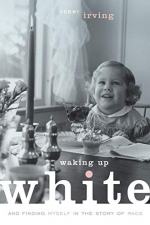|
This section contains 878 words (approx. 3 pages at 400 words per page) |

|
Waking Up White, and Finding Myself in the Story of Race Summary & Study Guide Description
Waking Up White, and Finding Myself in the Story of Race Summary & Study Guide includes comprehensive information and analysis to help you understand the book. This study guide contains the following sections:
This detailed literature summary also contains Topics for Discussion on Waking Up White, and Finding Myself in the Story of Race by Debby Irving.
The following version of this book was used to create this study guide: Irving, Debby. Waking Up White. Cambridge: Elephant Room Press, 2014.
Waking Up White is a memoir in which the author, Debby Irving, recounts her experience learning about racism in adulthood and provides advice for (white) readers who wish to learn more about this subject as well.
In Part I, Irving recalls her mother telling her as a child that the Native American population had been decimated by alcoholism. She wishes she had been provided more historical information about the plight of the Native Americans for context. Irving grew up in Winchester, a wealthy and almost entirely white suburb of Boston in the 1960s. Her parents were overprotective to the extent that they shielded her from learning about the Civil Rights movement happening at this time. She reflects on the fact that her white Anglo-Saxon Protestant (WASP) upbringing made it more difficult for her to relate to people of color or understand racial injustice. She was taught to avoid any contentious subjects in conversation and to refrain from expressing emotion.
In Part II, Irving explains that things changed for her when she was in her 50s and she took a class at Wheelock College called Racial and Cultural Identity. The first thing she learned was that black veterans were often denied benefits from the GI Bill, a 1944 legislative measure that offered money to soldiers returning from World War II. Irving's father received these benefits and used them to attend college, after which he became an investment lawyer. Irving was alarmed to realize that virtually her entire life was the result of privileges afforded to her from funds that were not evenly distributed. She explains that racial categories were largely invented by European explorers in the 16th century and used as a justification for slavery. She defines systemic racism as the combination of three factors—skin color symbolism, favoritism, and power. She explains that systemic racism is designed to make the lives of white people easier and the lives of people of color more difficult. The qualities of this easier life are often referred to collectively as white privilege.
In Part III, Irving continues to explore how her background made it difficult for her to understand the reality of racial injustice and how her life was vastly different than the lives of most people of color. In Part IV, she recalls working on diversity initiatives early in her career in arts administration. After an event called First Night, in which “inner-city” (108) youth were brought into downtown Boston to work with local artists, a black teenager declared that he was “scared” (110) while surrounded by so many white people. Irving notes that she quickly changed the subject, her WASP manners preventing her from engaging in an honest conversation about race.
In Part V, Irving recalls having her first child and enrolling her in preschool. As her daughter's education progressed, Irving volunteered in the classroom and later got a job teaching. She observed firsthand the achievement gap, in which children of color often fell behind their white peers in class and were more likely to end up in the principal's office for behavioral issues. One cause of the achievement gap (beyond systemic racism) is that parents of color are less likely to get involved at their children's school, usually because they feel uncomfortable and unwelcome. She recalls a black student she had who was convinced he would go to prison in adulthood because so many men he knew were incarcerated. Irving tried to help him imagine a potentially brighter future for himself, but she was battling years of social programming.
In Part VI, Irving remembers attending a conference for professionals of color and speaking up after the screening of a film to make suggestions. Several people in the audience took issue with Irving making comments about a subject she knew nothing about (racism), and she realized they were right. She then reflects on her mother's death after years of cognitive decline. She wishes their WASP culture had not prevented them from having honest conversations about their feelings. In Part VII, she goes on to suggest different ways white people can better understand the lives of people of color and work toward establishing a multicultural society. Much of this work involves setting aside the values of dominant white culture like rugged individualism and an overemphasis on career achievements.
In Part VIII, Irving explains how to be a good ally and act in solidarity with people of color, including speaking up when witnessing racism. She notes the importance of talking about race, even when it inspires discomfort, and fostering a multicultural environment where everyone feels welcome. In Part IX, she recalls her father telling her shortly before his death that he wished he had done more to help people in need. She wonders if he was referring to an incident from her teenage years when a Jewish family tried to join the Winchester Country Club. There was a vote on whether to allow them in or not, and while she does not know how her father voted, she knows that no Jewish family was permitted to join. She hopes to avoid having similar regrets at the end of her own life.
Read more from the Study Guide
|
This section contains 878 words (approx. 3 pages at 400 words per page) |

|



